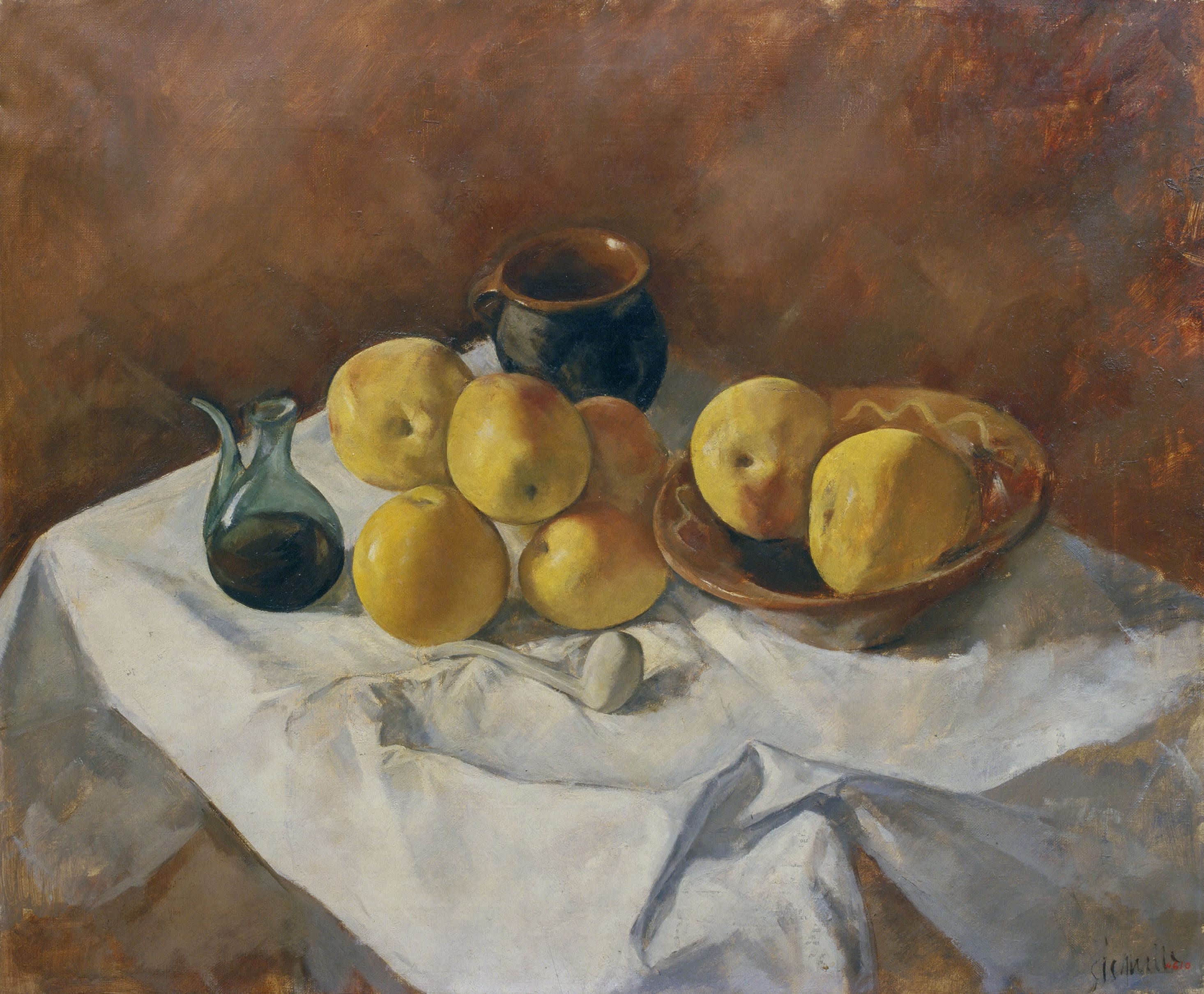-
Alfred Sisquella
Barcelona 1900 - Sitges 1964
Still life
c.1930
Oil on canvas
50 by 61 cm
Collections (selection)
Museu Nacional d’Art de Catalunya, Barcelona (Spain).Museu Maricel, Sitges (Spain).
Museu d’Art de Montserrat (Spain).
Museu Víctor Balaguer, Vilanova i la Geltrú (Spain).
Crèdit Andorrà Collection, Andorra la Vella (Andorra).
Museu de Valls
Thermalia, Caldes de Montbuí
Exhibitions
"Salons a Can Parés (1884-1930)". Barcelona, Sala Parés, 14th December 2019 - 25th February 2020."Montserrat Casanova, 1909-1990. Pintora entre pintores en los años 30". Barcelona, Sala Parés, 5th March - 1st June 2020.
Disciple of Francesc Labarta in the School of the Market, was one of the founders of the group the Evolutionists. Although he initially followed realism, from a very young age he was attracted to Paul Cézanne's painting and Cubism.
This work by Sisquella is an example of one of the most prolific and interesting periods of his career. The work demonstrates the type of production the artist made during the 1920s - 30s, when he participated in exhibitions in Madrid and Barcelona, which were well recieved by critics at the time. Each element of Sisquella’s still life is composed in such a way to form a balanced whole. The viewpoint is original, as Sisquella plays with a low angle shot that makes the whole visually appealing. The colour range and brushstrokes demonstrate the influence of Cézanne, whose work he greatly admired. The white tablecloth falls and wraps the vase, pears and peaches and it serves to further enhance the colours and life of these objects. Despite the traditional subject matter, Sisquella gives the composition a stiking modernity which reflects the artistic innovations of the time in which he painted, and his awareness of Cubism. Chromatic nuances create diffused, harmonious transitions between objects, and the table on which the different elements of placed appears almost unfinished. The work is tied together by the relativity between its various components; the white tablecloth falls as a curtain, connecting to the undefined green background to the right of the painting, which in turn ties in with the pears.
Some years later he would say, "We abandoned avant-garde some time ago, but our position is not the same as if we had not belonged to avant-garde and we cannot be understood if it has not been understood before.”
In 1923 he settled in Sitges, attracted by the figure of Joaquim Sunyer , and five years later spent a season in Paris. In 1928 he destroyed his Cubist works and returned to realism.
He is one of the Catalan artists who in 1940 took part in the collective exhibition organized by the Sabadell Academy of Fine Arts in this city.

Alfred Sisquella, Still Life, c. 1930, 59.5 x 72.5 cm.
Museu Nacional d'Art de Cataluny, Barcelona.
Cortés Vidal, Joan. Alfred Sisquella. Art. Barcelona, Diciembre 1933, núm.3, rep. p. 65
Bibliography
CORTÉS VIDAL, Juan. “Alfred Sisquella”, Art, num. 3, December 1933, rep. p. 65.Salons a Can Parés (1884-1930). Establiments Maragall. Barcelona, 2019, rep. p. 36.
Montserrat Casanova, 1909-1990. Pintora entre pintores en los años 30. Establiments Maragall. Barcelona, 2020, rep. p. 29.
